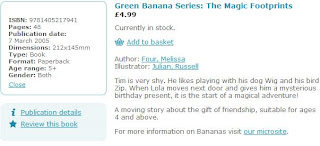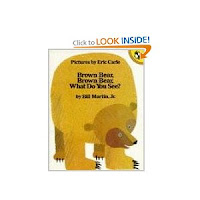Bananas can be green, blue or red– if they are from Egmont. These are Egmont’s easy reader series for a range of readers from a child who has just started reading independently to newly fluent readers.
Ranging from 3 short stories for the first readers to chapter books for the fluent reader, the series aims to build confidence for young readers who are attempting reading on their own.
As a rule, they are full-colour and illustrated to ensure the contextual recognition of words is aided and speech bubbles to make it a bit more fun.
Search for Banana Books by clicking here.
As part of my research into easy readers, I decided to analyse them technically. How are they put together – pages, words, speech bubbles – is there a guideline I can use. I don’t have to follow the pattern exactly – but
there is no pointing in submitting a manuscript that’s too far off either.
I am still not sure if the writer has to recommend the speech bubbles too. Or perhaps the designer and illustrator would decide. In the books I read, the speech bubbles complement the story and do not act as substitutes for actual dialogue.
This week let’s look at a Green Banana – the youngest in the series.
Egmont says Green Bananas are three short stories for first readers.
I read two in this series
The Magic Footprint by Melissa Balfour and Russell Julian
And I can, you can, Toucan! By Sue Mayfield, Rochelle Padua
I analysed the title “The Magic Footprint” from a technical standpoint.
The book totally had 48 pages – that provided 22 spreads for the actual story.
There were three linked stories – with a simple beginning, middle and end. But the end was not like a finale, more like each story was by itself a beginning, middle and end of the book.
I think that encourages the child to read the next story, while giving the reader confidence and pride on finishing one story.
Eight of the pages across different spreads had speech bubbles.
Although the book has 22 spreads, the number of words were only 282. An average of 12 words per spread – some higher than that and some lower.
Each story is roughly 100 words – although I think that would depend on the story itself.
Each of the spreads had short sentences, nothing complex. And the words were repeated as much as possible.
The stories need to be simple but sustain interest. No complex plot, not too many characters. Looking at both the books in comparison – 3 characters utmost.
It is a challenge to write a full story in 300 words. It is even bigger a challenge to break into 3 stories with its own complete beginning, middle and end. Now I am looking at some of my manuscripts to see which one can be a green banana.
=============================================================
Visit www.chitrasoundar.com to find out more about Chitra’s books.












